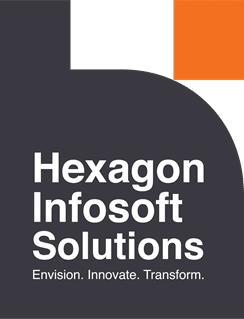Measuring ROI and Impact
Why the success of your new AI depends on measurement
As we enter the era of generative AI, this game-changing technology is full of promise and opportunity. However, a lot of executives want to confirm that they are genuinely getting the most out of their AI investments and seeing the results that have been promised.
Using key performance indicators, or KPIs, your firm likely measures hundreds, if not thousands, of metrics already to assess the success of numerous teams and initiatives. With a caveat, the same ought to apply to your generative AI effort.
“Artificial Intelligence in Business Acts as a Tool for Monitoring Project Performance”
AI is a technology that can be applied in vast scenes of project management. The article is going to discuss ways through which different forms of artificial intelligence can be applied to improve the results and save time.
How did the development of Enterprise AI Implementation stem from continuous improvement?
Continuous improvement has been a major part of the evolution of AI toward the creation of contemporary AI tools.
In applications of certain AI, CI has already been used to a great extent in training algorithms to create new writing, images, and music. It was slow for a while, but with processing power ramping up very fast and efficiency resulting from it, that has accelerated the pace of development of AI algorithms further, which can now be an excellent AI strategy, producing high-quality content with accuracy at much faster speeds.
- Data Collection and Analysis: Much data, needed for the training of AI algorithms, has been collected and analyzed by applying continuous improvement approaches.
- Algorithm development: With approaches of continuous improvement, AI algorithms have also been developed.
Defining KPIs for AI Initiatives
In the case of Artificial Intelligence, knowledge of how to deal with Key Performance Indicators is critical to assessing the success of any AI project. Other than helping in measuring the performance of AI, well-tracked KPIs also help demonstrate ROI and fuel ongoing development. This paper elaborates on the basic concepts of AI KPIs, AI ROI, AI performance tracking, and why continuous improvement is majorly important.
Knowing AI Key Performance Indicators: an AI Execution
These metrics are called Key Performance Indicators (KPIs) and can be used to measure the degree of success of an AI program or project. These metrics go a great way in indicating whether the AI solutions are achieving what they are set out to do and delivering value. It forms the basis for understanding AI KPIs: choosing the right measurements and ensuring they align with organizational objectives.
- Define Explicit Goals: The goals for an AI project should be set, first of all. These goals should be specified, targeting and aligning with the company’s overall goals.
- Selection of useful KPIs: Pick KPIs that will provide information on key parameters in the performance of AIs. It may relate to accuracy, speed, user happiness, cost savings, and so on. Ensure the measurability and relevance of such KPIs to the project goals.
“Tracking and reporting AI performance”
AI performance tracking simply means monitoring how an AI solution is performing compared to set KPIs. Proper tracking ensures that issues are identified at a very early stage and fixed fast enough.
- Monitoring Instruments: AI-fitted performance monitoring instruments can trace the KPIs in real time.
- “Performance data analysis”: “Receive information about the performance of an AI solution through the periodic review of performance data”.
AI Return
Now, cost-effectiveness forms a major portion of quantifying “AI ROI“—that is, the return on the investment from AI. It will help top leaders understand the effect of efforts with AI on the bottom line. Justification for being cost-effective can be done with the help of the ROI for AI.
- Determine Costs: Calculate the total cost that will be used in the AI project. In this category, it considers the costs associated with development, implementation, maintenance, and running. Reliable computation of the cost is the basis for an ROI analysis.
- Estimate the benefits: Work out how much the AI solution will benefit your company. This may be in terms of increased customer satisfaction, cost reduction, and enhanced revenues and efficiency.
Continuous improvement and optimization
For AI, this is in terms of performance that is sustained by continuous improvement. To them, it is periodic in terms of examination and the enhancement of the AI solution for them to be effective and oriented towards corporate objectives.
- Get feedback:Get feedback from the user and other stakeholders on what needs improvement. User feedback will give you areas to improve and how well it meets the user’s need for the solution in AI.
- Periodic Review: Measure the performance of AI against the benchmarks and KPIs intermittently. Test that the AI system is attaining its objectives to realize expected benefits.
Conclusion
One has to understand and monitor the KPIs of AI to evaluate AI efforts and encourage continuous improvement. If performed effectively, the continuous monitoring of AI performance, the calculation of AI ROI, and the promotion of continuous development culture all ensure that AI solutions would bring tremendous value to organizations and remain aligned with business objectives.


